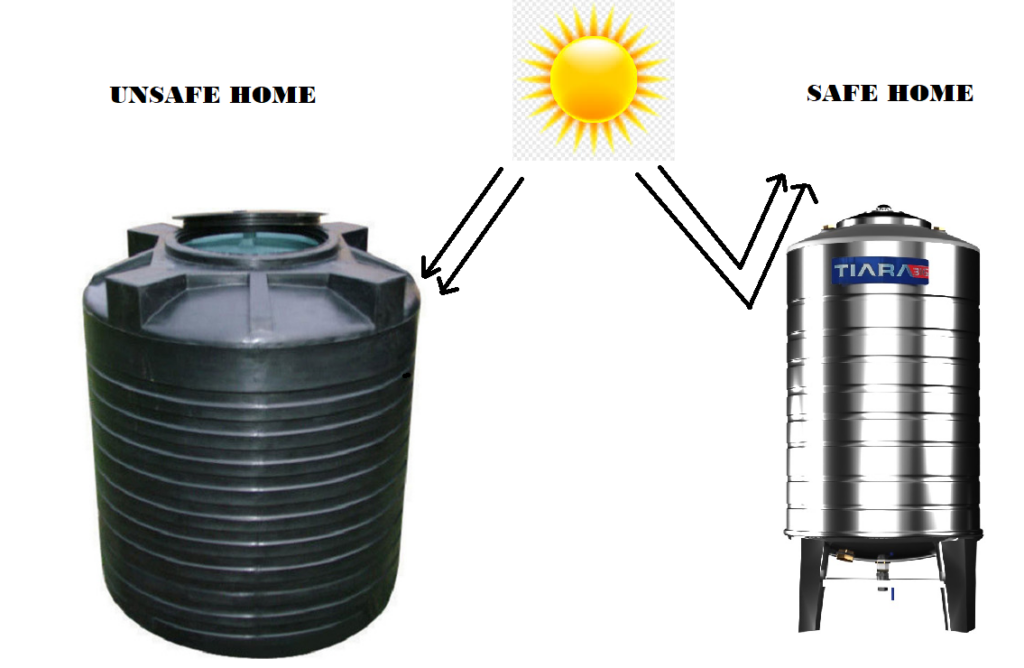
Ultraviolet (UV) rays, part of the spectrum of sunlight, are known for their ability to cause chemical reactions and physical changes in various materials. When it comes to storage tanks, the impacts of UV exposure differ significantly between plastic and stainless steel, making the choice of material critical for long-term durability and environmental resistance.
The Vulnerability of Plastic Tanks
Plastic tanks, often made from polymers such as polyethylene, are particularly susceptible to UV radiation. UV rays penetrate the surface of plastic and initiate a process called photodegradation. This process occurs when the energy from UV light breaks down the molecular bonds within the polymer structure. Over time, photodegradation causes the plastic to lose its structural integrity, leading to brittleness, cracks, and discoloration.
Key factors contributing to UV damage in plastic tanks include:
- Prolonged Sunlight Exposure: Continuous exposure accelerates degradation.
- Type of Plastic: Not all plastics respond equally; unreinforced plastics are generally more vulnerable.
- Environmental Conditions: High temperatures and humidity can intensify UV damage.
UV inhibitors can be added during manufacturing to mitigate the impact of UV rays. These additives work by absorbing or reflecting UV radiation before it can damage the plastic’s molecular structure. However, even with UV stabilization, plastic tanks have a finite lifespan when exposed to intense sunlight, requiring maintenance or replacement over time.
Stainless Steel's Resistance to UV Rays
Stainless steel tanks, in contrast, remain unaffected by UV radiation. This immunity is due to the fundamental properties of stainless steel, which is an alloy primarily composed of iron, chromium, and nickel. UV rays do not cause photodegradation or chemical reactions in metals, as they lack the molecular structure susceptible to UV-induced breakdown.
The chromium content in stainless steel forms a passive oxide layer on the surface, which protects the material from environmental factors, including sunlight. Unlike plastics, stainless steel does not warp, crack, or discolor under UV exposure. Additionally, stainless steel is highly resistant to corrosion, further enhancing its longevity in outdoor conditions.
Application and Sustainability Considerations
While stainless steel tanks offer superior durability and UV resistance, they are generally more expensive than plastic tanks. This cost difference often makes plastic tanks a more popular choice for residential and agricultural use. However, for applications requiring long-term reliability and minimal maintenance, stainless steel is the preferred material.
From a sustainability perspective, stainless steel tanks are also advantageous. Their long lifespan and recyclability reduce environmental impact compared to plastic tanks, which often end up as waste after degradation.
Conclusion
The divergent impacts of UV rays on plastic and stainless steel tanks highlight the importance of material selection based on application requirements and environmental exposure. While plastic tanks may serve short-term needs with cost efficiency, stainless steel tanks provide unmatched durability and reliability under continuous sunlight, proving their worth in the long run. By understanding these differences, consumers can make informed choices that balance performance, cost, and environmental considerations.


